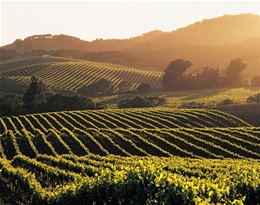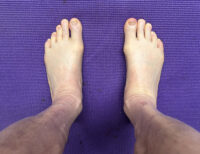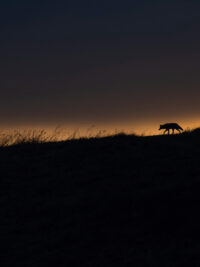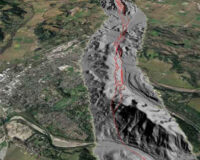By Deb Carlen | Sun Creative Arts Editor
When I arrived in Petaluma in 1999, emotionally beaten and exhausted from relentless corporate and non-profit group wars in three states, I had no idea what awaited. My former advertising and marketing world was full of shock and awe, publishing wars; skirmishes, lies, and traps in the non-profit sector; territorial politics everywhere. All this after a brilliant (OK, so I’m saying it; raise your eyebrow if you must) six years of teaching all over the U.S. and Canada under the mentorship of [now] political commentator Thom Hartmann.
After all, I’d made a decision 3,000 miles away off the other coast to move by holding the east end of a ruler on the Outer Banks of North Carolina and letting the west end of the ruler fall where it would.
It landed north of San Francisco. “What the hell,” I thought. “I’ll give it a shot.” Three interviews —set up the old-fashioned way, by searching online job listings and wheedling meetings—and three job offers later, I loaded up the 12-year-old Acura, put the cocker spaniel in the passenger seat on a stack of books, and set out.
Stupidly, I hadn’t bargained the cost of the move into the deal. I sold everything I could and shipped boxes to an obliging new employer. My California life started at the end of the road trip across the country—a spectacular education in itself. It was my Sonoma experience genesis. The team that hired me voted for me over the objections of their boss. It was a self-directed workplace environment, and they could do that. What? WHAT? They could outvote a higher-up? Now that was self-direction. And they continued speaking pleasantly to one another afterward! I definitely wasn’t on the other coast any more, Toto. The woman who led this civil rebellion (and remains a dear and steadfast friend) and another team member took me to an incredible welcome dinner the first week I was on the job.
The position was in Petaluma; I boarded the dog in Sonoma until I found a place to live, so I often wandered around in town after visiting the dog. The Marriott where I lived was very apologetic about not allowing my dog to stay with me. I was puzzled. Again: WHAT? Who expected that they’d allow dogs? Twice across the country I’d had to sneak him into rooms overnight.
I moved to Sonoma (city of) after nine months in Petaluma, which did have its own undeniable charms. The landscape of the Valley of the Moon fascinated me. The smooth, slightly ruffled hills punctuated by art deco trees; the wind farms farther out; the rosemary planted in tiny green spaces of parking lots; the orange poppies. And the AIR! So sweet I barely believed I was breathing. The next gift was the low humidity; it added a decade of energy to my life. Remember, I knew nothing of the area when I arrived. The yearning for California was born during a 1987 visit to participate in a music festival at Berkeley. I knew Berkeley was its own hybridized, refined microcosm but I thought that if it existed here, something good was happening in northern California, and it wasn’t just San Francisco itself. In the early 1990s I drove from Sacramento to San Francisco on a lecture tour and I was in thrall over the landscape of the little trip. Even the traffic bothered me not at all.
The first five years were an education. New ideas were welcomed, not discouraged. People were patient with me as I learned the lifestyle. For instance, the question “how far is it up 101?” was met with “Oh, not too far. About 20 to 45 minutes.” Eh? Translated, the response meant about 60 miles. “You can’t miss it” meant “just keep going until it shows up.” Despite me making it as difficult as possible by stopping for directions and using bits of four languages every few minutes, I didn’t miss it.
At work, they allowed me to show them new ways to streamline and save money, and they didn’t blame me for being right. Very non-east-coastish. I didn’t have to maneuver or work around naysayers, of whom there were few. The tactics were transparent and reasonable; the implementation agreed upon in advance: no turf wars. After all, it’s Sonoma County.
I learned to free up my life. If you’ve moved here from outside California, you’ll know how difficult this is to explain. My Atlanta friends wanted me to pin it down. “Well WHAT’S so different?” It’s a loosening of the body, a clearing of vision, an awareness of the wind blowing, and soft-soled shoes in hallways. It’s an awareness that people matter in a way that feels familial, not required or pro forma. I sat in Sonoma’s outdoor amphitheater on a Tuesday Farmer’s Market evening with a zillionaire corn-dog eater on one side and a precocious Maori four-year-old on the other telling me how wine grows. Kenwood and Petaluma and Glen Ellen and Cotati and Schellville and Santa Rosa were weaving a light, strong web around me. Sonoma, city of, was teaching me about existence and mindfulness. And how to listen.
The vineyards and wine people? A new species. I’ve never met a group so close to the soil, so excited about working with a crop. It wasn’t just the resultant wine. It was the whole process. From stakes in the ground to the turning, turning, turning of the soil, to the vines unfurling down their proscribed avenues, to their nurturing by skilled, primarily Latino/a men and women. I believe the wine industry here in the Valley is populated by a bunch of agricultural mystics and elite business types in sundresses and shirtsleeves. They gently coax, tend, encourage, and feed vineyards. Older growths are treated like the royalty they are. I’m aware of the highly competitive business that drives the industry. But the romance of seasons is so profoundly an ingredient of the area that each represents a unique aspect of the vineyard phenomenon outside the office. Drinkers of wine have no clue what goes into their glasses of heaven before the pour.
It wasn’t the vineyards alone. I accidentally dropped seeds on the ground: a week later something grew. I was as fascinated as a second grader with her first bean-sprout project. Land this rich has an impact on the people who live here. I began to notice the local attitude about individuals’ relationships to, well… to the dirt. I’m not saying that St. Louis, Washington, DC, and Dallas are mud puddles of dissent, grouchiness, and poor dirt, but in Sonoma you have to work hard to be in a bad mood around this kind of ground. There must be a law.
People here were—are—generous with their time and money. With their authenticity and their ability to nurture, to adapt. People here never say, “you don’t need to know that,” which is a sure sign of a hierarchy-entrenching threat in east coast business. People here are more likely to decide to use your talents and ideas in a dozen sharing ways to improve a thought, a condition, a moment. I don’t know what else to call it except a Sonoma state of mind.
It took me a while to “grok” the reversal of seasons. I had no clue it didn’t rain in the summer. That first July, I saw people on their housetops watching dry lightning at night. What are you, California lightning rods, or just plain nuts? “Isn’t it beautiful?” they asked.
I was most confused, and hugely disappointed when told it probably wouldn’t rain until January. Everyone else understood this as a way of life; they weren’t upset in the least. Where was I living, Australia? Does the rest of the country know about this? Then I spent my first green winter trying not to drive off the road, openmouthed and grinning at miles of vivid emerald pastures and hills. I listened to tales of genial General Vallejo. “Sure, you can have the town. No problemo.”
I learned about the dairies, the entrepreneurial cheese makers, the miniature vegetable grower-artists, and the deep love for animals. I moved from the east side of town to the Springs. From the capital to the provinces. The first afternoon, I sat on the front porch after an army of friends moved me, and took a few minutes to reorient myself. A llama walked down the street. Stereotypically arrogant, in no hurry, turning her head to look at me as she tiptoed ahead, not even stopping. I’d been here five years by then. I never anticipated but was always more than happy with these excruciatingly interesting events.
After all, it’s Sonoma.
Multiple cultures were eager to engage in conversations about myriad topics. There’s a Finnish group here. Real Sherpas with restaurants. Veterans of San Francisco Light Opera. Metalworkers who built the Alaska pipeline. A perennial member of Architectural Digest’s Top Ten. Retired women Olympians.
The anti-GE lingo took some explanation. I kept wondering why the delightful Glen Ellen folk were so disliked. I was pretty red-faced about that one. Anti- GM made more sense. Many asked about growing up in the South, which was obviously a different planet (quite true). Without fail, every week since July 1999 I have replied to someone that no, I do not have an accent. It’s the way you’re listening, not the way I’m talking. I’m convinced I am totally accent-free.
Sonoma, for me, isn’t “almost magical.” It is downright conjured. Disagreements are settled openly, disappointments are considered growth opportunities, downfalls are invitations to improve on the second try. With the Valley’s energy and passion, anything is possible. Some of you are shaking your heads. “Life is yucky, this isn’t MY Sonoma, people here are weird, the land isn’t that all that and a bag of Hershey bars.” Maps are available at Readers’ Books to research your next zip code. Maybe it isn’t great for everyone. After all, it’s Sonoma.
Now let’s deal with the devil in the room (elephants shouldn’t always take the rap). Into this paradise, an ugly, almost unfathomable horror has fallen. One of the most beautiful, energetic, pleasant places on the planet has suffered a degree of pain that must create its own language to be expressed. A physical and emotional devastation, a wholesale homicide by fire. Our big sisters to the north and the east; our siblings nearby; some of the town of Sonoma’s own streets and mansions are brutalized, sometimes to the ground. Some of our wineries are down. The loss of life and home resembles a war we didn’t win against an inhuman foe.
Our beautiful, lush magic is seriously damaged, and can only stand beside us as a bright, shivering shadow. It will take decades and miles of heartache to mend. This stupefying loss defies understanding or acceptance. Here in the town of Sonoma, only by the grace of thousands of responders and whatever your belief system is, we experienced the incredible good fortune to remain largely unscathed. The weight of uncertainty, the evacuations and returns, rubbing shoulders in evac centers with strangers, the constant presence of bulldozers, helicopters, and law enforcement from a dozen locales became everyday blessings. For many, no electricity or digital access for a week was also a tooth-grinding challenge.
Now, world, watch very closely. We will mourn properly. It is a necessity for many reasons. But the dead cry out, “get on with things. Honor us by moving forward.” The anxious feel of restlessness was already in the air on Sunday evening, October 15, though fires still burn. The magic is now in the hands of the people. I’m fairly certain that delays by the Federal government—should they develop—will not be tolerated. Insurors, construction supply mega-providers, and bureaucrats petty and powerful, be informed: nothing is going to stop or slow Sonoma County and environs. Work with us and you’ll have our loyalty: that’s worth some bucks. We’ll recover. It won’t be the same, and we won’t “go back to those days.” But it won’t be radically different when the magic solidifies again. It will take time, but I’ll bet hard Yankee cash that it won’t take as long as the talking heads outside Sonoma say it will. We are indeed #SONOMASTRONG. Same magic. Different flavor.
If you can’t help, maintain, work, provide care or create new ideas, get out of the way. If you want for some godforsaken reason to sow discord, we’ll provide you with a ride out. Our motivation and drive will overcome even the pain engulfing us today, though it’s permanently lodged in our psyche. How can I be so sure? Because I came from “out there” and I’ve become “here” and been changed permanently. I see and feel and know how solid and good we are. My friends and next-door neighbors proved it 1,000 times this week alone. We know the essence of life here is too magnificent to lose and we’ll do whatever it takes to preserve it.
Weep and grieve today and tomorrow. And then some, until you can bear to rise for the next chapter. Try not to ruin your lives with survivors’ guilt. We’re still in the battle, and we’ll win if we focus on right action. The ideal was and is and will be the Sonoma state of mind. Deep down, you know this is true. Don’t let the statistics and doomsayers push you off the path. It’s going to be a big, long project because nothing this excellent happens in a day or a year.
After all… it’s Sonoma.
Deb Carlen resides near the Springs in Sonoma. She creates and teaches writing courses, coaches writers, and edits books and stories. She created the Writing Center at Vintage House (for all ages). She collects rocks, foreign language dictionaries, and stuff. She is a natural-born geek.
Deb curates and designs the Creative Arts pages in The Sonoma Valley Sun. Elsewhere, she’s published stories, poems, articles, instructional materials, and humongous mounts of uncredited advertising and marketing (because that’s the way such stuff works).
It’s said you can throw a stone in Sonoma and hit an artist or a winemaker. The truth: you’ll actually hit a writer, but they never get the credit for writing every freaking thing you ever read or heard a newsreader read or saw on television and said by a character at the movies. Ms. Carlen is fairly polarized on the issue and aims to make Sonoma a writer’s paradise.






Be First to Comment